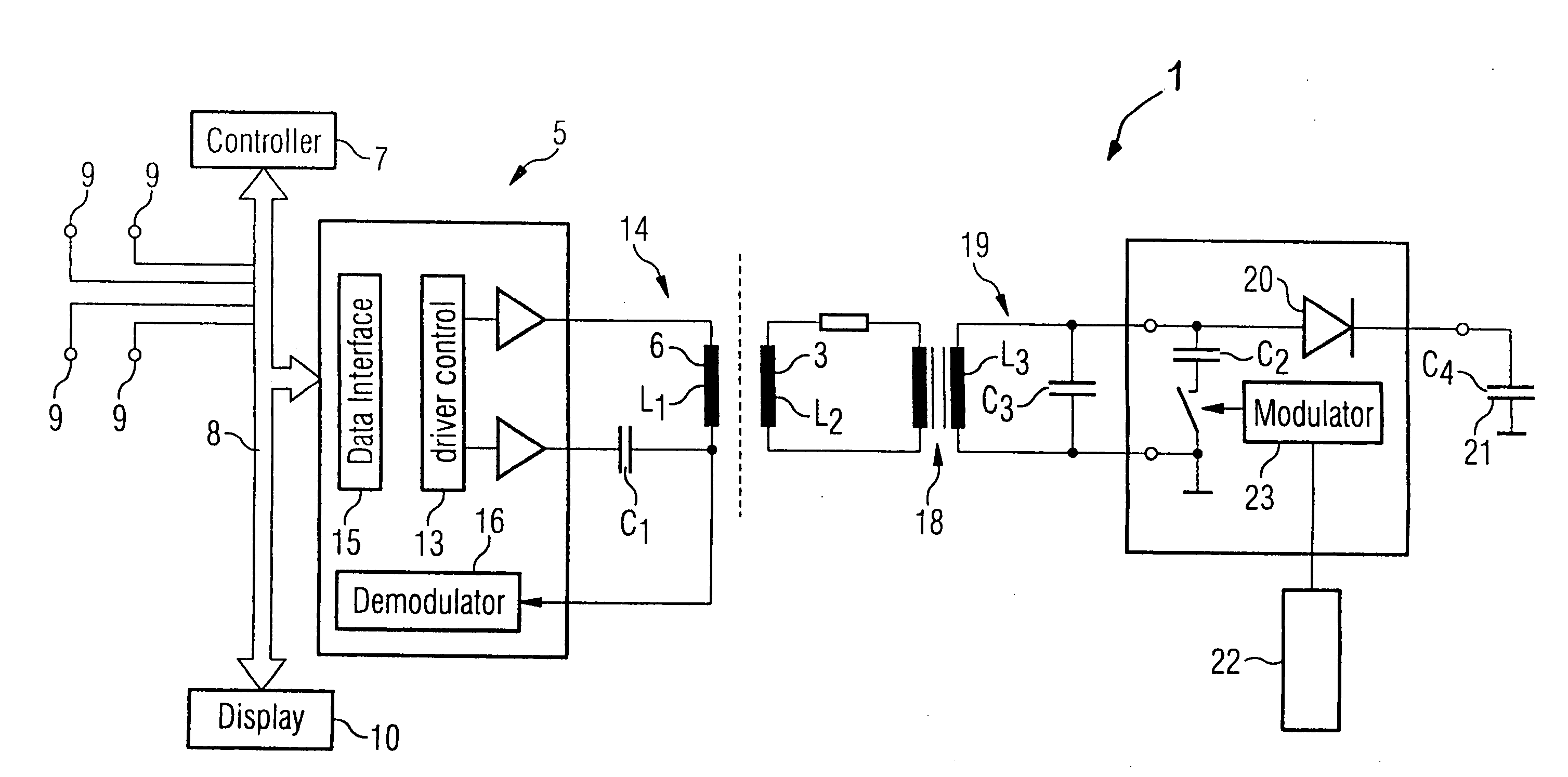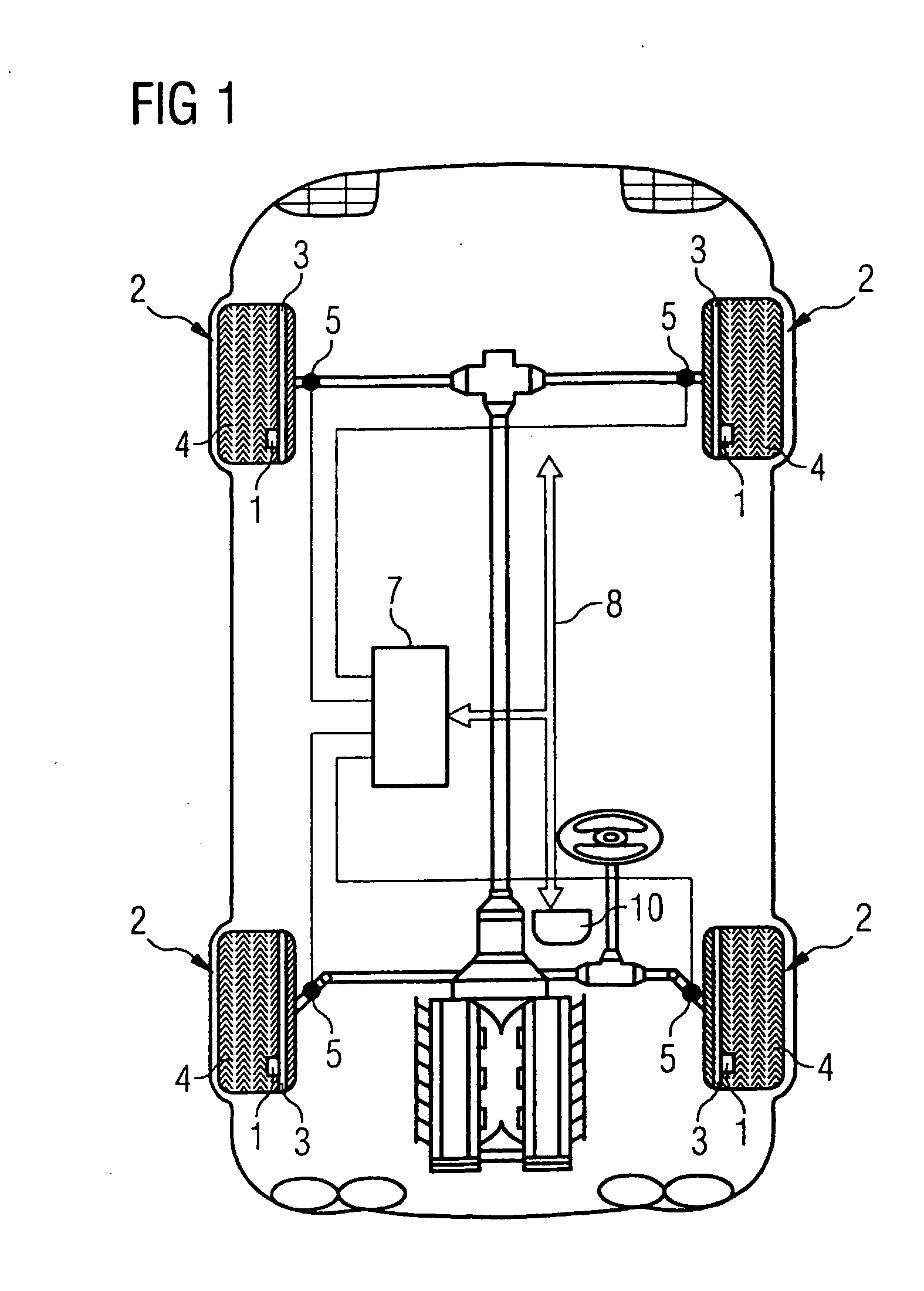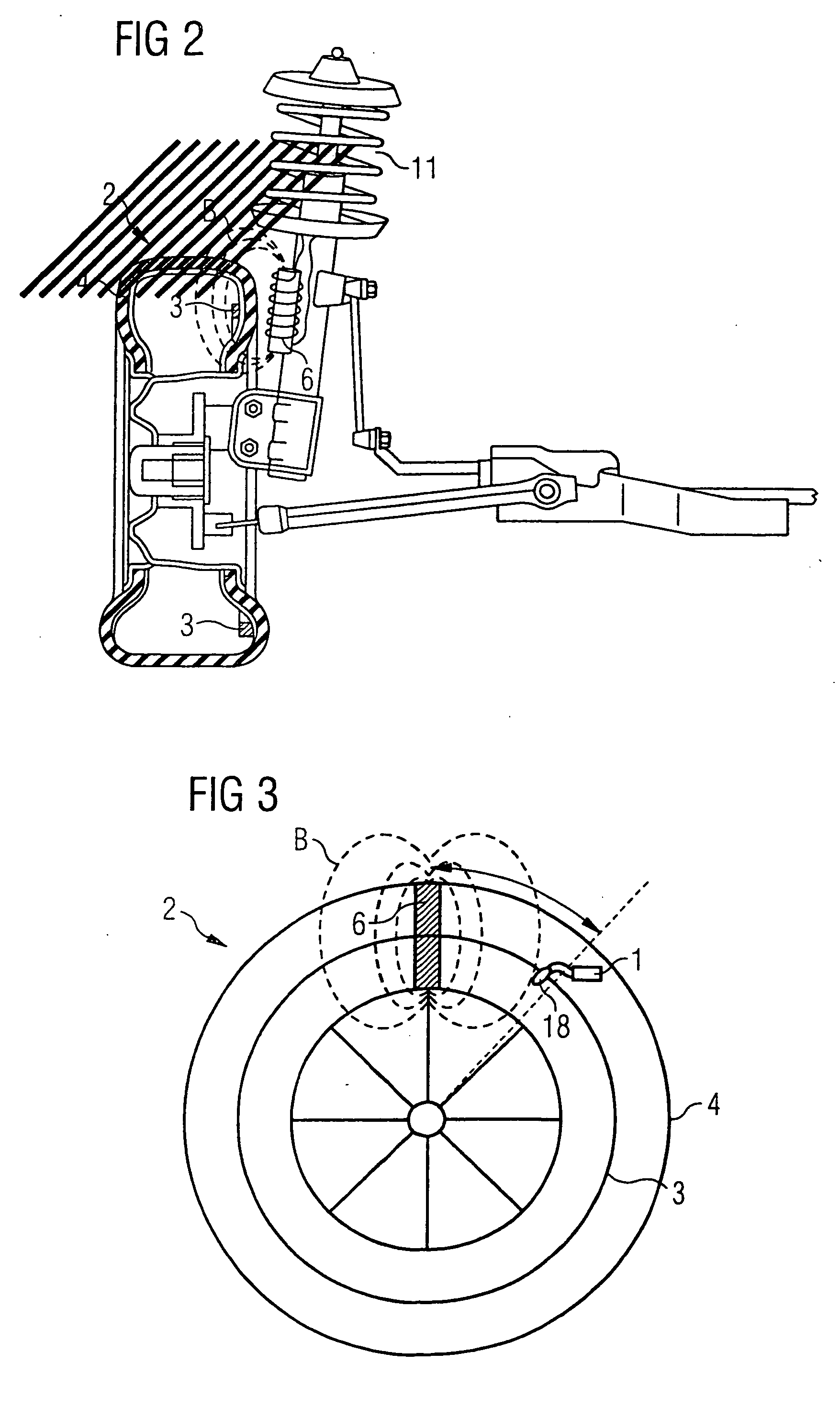Configuration and method for bidirectional transmission of signals in a motor vehicle
a technology for motor vehicles and signals, applied in the direction of near-field systems using receivers, near-field systems for reading/writing/interrogation/identification, transportation and packaging, etc., can solve the problem of high accident risk, and achieve the effect of keeping energy signals relatively small
- Summary
- Abstract
- Description
- Claims
- Application Information
AI Technical Summary
Benefits of technology
Problems solved by technology
Method used
Image
Examples
Embodiment Construction
[0032] Referring now to the figures of the drawing in detail and first, particularly, to FIG. 1 thereof, there is shown a configuration and a method for bidirectional transmission of signals between two transceiver units disposed remotely from one another in the motor vehicle and is explained below using a tire pressure measuring system as an exemplary embodiment. In this case a transceiver is used to transmit energy to a passive transponder, which triggers the return of tire data from the transponder to the transceiver.
[0033] A “transponder” here is taken to mean an electrical device which can both receive and transmit signals. Various information data is modulated onto the transmitted signal in this case. Such information can be measured values or also other physical parameters such as tire pressure, temperature, revolutions, accelerations, tire wear, loading, etc. Fixed information can also be modulated onto the signal, such as for example a tire identification code. With transp...
PUM
 Login to View More
Login to View More Abstract
Description
Claims
Application Information
 Login to View More
Login to View More - R&D
- Intellectual Property
- Life Sciences
- Materials
- Tech Scout
- Unparalleled Data Quality
- Higher Quality Content
- 60% Fewer Hallucinations
Browse by: Latest US Patents, China's latest patents, Technical Efficacy Thesaurus, Application Domain, Technology Topic, Popular Technical Reports.
© 2025 PatSnap. All rights reserved.Legal|Privacy policy|Modern Slavery Act Transparency Statement|Sitemap|About US| Contact US: help@patsnap.com



